The squat is my favorite lift.
I know that’s old news – so I won’t expand on it – but I just want to re-emphasize:
THE SQUAT IS FREAKIN AWESOME!
And, because I feel so strongly about the squat (seriously, it’s bordering on obsession), I’d be lying if I said I didn’t get irritated every time I see it performed poorly.
Or when someone claims that “the squat is bad for your knees.”
Or when someone performs the lift poorly AND claims that “the squat is bad for your knees” (seriously?).
The squat – when performed CORRECTLY – is one of the best exercises you can do to:
-Build devastating strength and size in the lower body
-Improve athleticism
-PROTECT your knees
-Increase your overall level of badassery
And, in today’s article, I want to look at – and provide solutions for – the three most common back squatting mistakes (I see), in order to help you remove the negatives associated with the lift, while reaping all of the positives.
Mistake #1: Raising Up Off of Your Heels
This is probably the most common back squatting mistake, and it not only reduces the weight you can lift, but it greatly increases your risk of injury.
In most cases, raising up off of your heels during the squat is a result of poor motor control (not knowing how to squat properly) and/or a lack of ankle mobility.
When you squat, the goal ISN’T to bend directly at the knees.
The goal is to bend at the knees and hips SIMULTANEOUSLY, thereby sitting in between your legs and effectively loading your glutes and hamstrings (the other prime movers during the lift).
A good way to practice this is with the goblet squat, or the squat “to a box.”
With the squat “to a box,” place a box (or bench) behind you – like in the picture above – squat until your butt hits the box, and explode back up to the starting position.
Just a couple of notes on this:
-Sit DOWN in between your legs; DO NOT shoot your butt back.
-Keep your knees in line with your toes (a good cue is to spread the floor with your feet).
-Try to maintain an upright torso position (some forward lean is fine).
-DO NOT sit on the box; simply squat down until you feel contact with the box, and explode back up.
With the goblet squat, you want to focus on the same cues…you just don’t have a box to sit on.
The goblet squat provides extra stability – since the anterior load placement acts as a counterbalance – making it much easier for you to hit depth.
Practice these two movements for 2-4 weeks (or until you feel you’re more proficient with your squatting pattern), and once your squat form has improved, progress from there.
As far as a lack of ankle mobility (specifically dorsiflexion range of motion, or the ability for your knee to travel forward past your toes without your heel coming off the ground), there are two ways to solve this problem:
- Work on your ankle mobility. There are a bunch of mobility drills for the ankles you can find here – http://www.smootfitness.com/my-top-bang-for-your-buck-mobility-exercises/ – and I recommend performing these as a warm up before you train, and/or at night for 5 minutes before you got to bed.
- Buy some Olympic lifting shoes. These shoes are made with a raised heel, thereby reducing the amount of dorsiflexion your body has to produce naturally.
Even if you get Olympic lifting shoes (which I think you should – they’re awesome), you should still work on your ankle mobility from time to time.
Do that – and continue working on your squatting technique (specifically your ability to squat without raising up off of your heels) – and this problem should disappear rather quickly.
Mistake #2: Rounding Your Upper Back
This is also synonymous with falling forward at the bottom of the squat.
This turns the squat in to a pseudo good morning, making the completion of the lift 1,000X harder and dramatically increasing the strain on your low back.
The most common reasons people tend to round their upper backs/fall forward are as follows:
- A lack of tightness.
- Insufficient T-Spine mobility.
- Weak quads
Let’s cover each one individually.
A Lack of Tightness
This really comes down to practice.
A lot of people set up for a squat the same way they would set up for a bicep curl – loose and un-controlled.
THIS IS A MISTAKE.
When you set up for the squat, you want to get as tight as humanly possible.
Grip the bar as hard as you can (think about “melting the bar in between your fingers”), and once the bar is on your back, squeeze your armpits in (act like your making orange juice) and drive your elbows down towards your back pockets (which will puff out your chest).
Keep this tightness THROUGHOUT THE DURATION OF THE LIFT, and as you ascend from the bottom position, drive BACK in to the bar, not straight up.
This is easier said than done, and will take a bunch of practice (hell, I’m still working on it now).
But, once you learn to get tight – and increase your ability to withstand falling forward – your squatting strength will improve dramatically.
T-Spine Mobility
The T-Spine refers to the thoracic spine, or – in more simple terms – your upper back.
For a lot of people – who sit at a computer all day – their upper back is constantly in a flexed position.
And, this is a problem, because a lack of T-Spine extension (i.e. a chronically rounded upper back) makes your ability to withstand falling forward infinitely harder (you’re in a rounded position before you even begin the lift).
For T-spine mobility – there are a host of drills you can do to improve it, which you can find here:
http://www.smootfitness.com/my-top-bang-for-your-buck-mobility-exercises/
Once you improve thoracic extension, the chances of your back rounding – or you falling forward – will decline dramatically.
Weak Quads
Not everyone has this problem, but if you’re a hip dominant squatter like me, weak quads make it harder to stay upright as you explode out of the bottom because once your quads fatigue, your glutes and hamstrings start to take over the lift (which pitches you forward).
This isn’t 100% a bad thing, as the glutes and hamstrings ARE prime movers during the lift, but you’re squat will only get better/stronger if you strengthen your quads (if that’s the limiting factor).
And a good way to do this is with front squats, Olympic squats, leg presses, lunges, and/or split squat variations.
Mistake #3: Letting Your Knees Cave in
This is the last common mistake I see, and it looks something like this:
This does two things:
-Increases shearing force on the knee (which increases your risk of injury)
-Decreases the engagement of the hips (thereby reducing the amount of weight you can lift)
The main causes of your knees caving in during the squat are weak hips, a lack of motor control, and a lack of hip mobility.
As far as motor control, refer back to point #1.
Remember to SPREAD THE FLOOR WITH YOUR FEET, thereby engaging the hips and keeping your knees directly in line with your toes.
Hip mobility wise, there are a bunch of drills you can do – my favorites can be found in the article down below:
http://www.smootfitness.com/my-top-bang-for-your-buck-mobility-exercises/
And finally, weak hips are improved by consistent squat training, as well as the implementation of hip dominant exercises such as sumo deadlifts, conventional deadlifts, wide stance squatting (if you’re a narrow stance squatter), Romanian deadlifts, deficit deads, block pulls, and any and all hip thrust variations.
Like What You See?
Get the Smoot Fitness Guide to Getting Stronger - FREE.
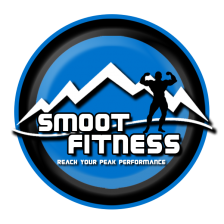

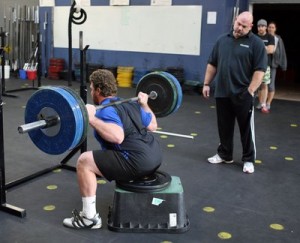
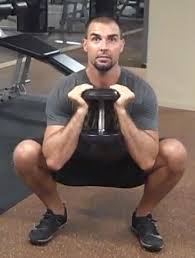
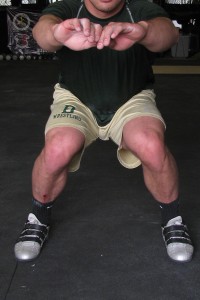
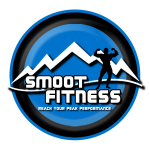
Leave a Reply